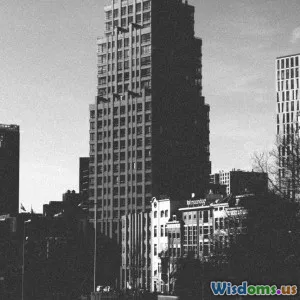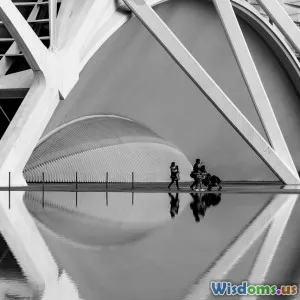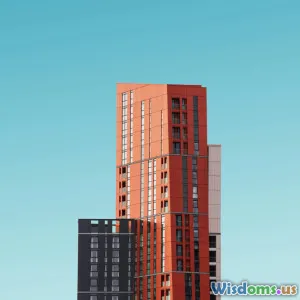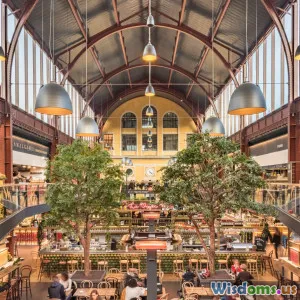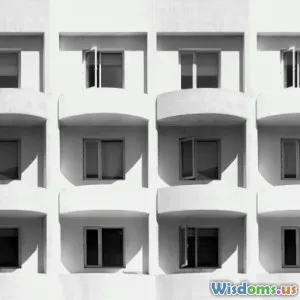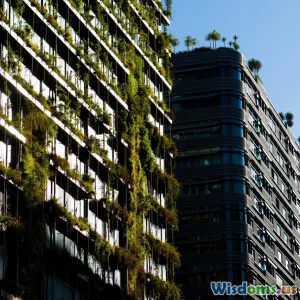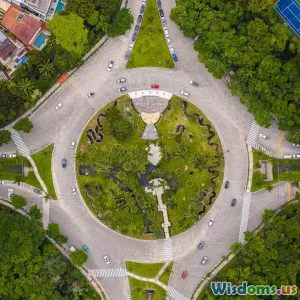
Gothic Revival Versus Art Deco: Which Shaped Cities More?
9 min read An in-depth analysis of Gothic Revival and Art Deco's impact on shaping modern cityscapes. (0 Reviews)
Gothic Revival Versus Art Deco: Which Shaped Cities More?
Cities are living museums of architectural evolution, where design styles narrate stories of their eras, aspirations, and identities. Among these, two styles stand out for their dramatic impact on cityscapes worldwide: Gothic Revival and Art Deco. These distinct architectural movements, emerging a century apart, have carved their marks into skylines and streets. This article investigates which style shaped cities more profoundly — a question that compels us to explore history, aesthetics, socio-cultural factors, and urban transformation.
Introduction: Architecture as a City’s Identity
Architecture is far more than shelter; it defines cities’ personalities, reflecting social values, technological advances, and artistic imagination. From the soaring spires of Gothic Revival cathedrals to the geometric elegance of Art Deco skyscrapers, these styles reveal how societies envisioned progress and beauty.
Understanding the influence of Gothic Revival and Art Deco is vital as both shaped different city dimensions — Gothic Revival with its romantic retrogression and Art Deco with its forward-looking modernity. But which of these visual languages sculpted our urban environments more fundamentally?
Gothic Revival: Rediscovering the Medieval Soul of Cities
Historical Context and Origins
Emerging in the late 18th century and flourishing in the 19th, Gothic Revival was a reaction against the Enlightenment's rationalism and the Industrial Revolution's mechanization. It sought to revive medieval architecture’s spiritual ethos and craftsmanship, symbolizing tradition and moral values.
Key Characteristics and Iconography
Gothic Revival architecture features pointed arches, ribbed vaults, flying buttresses, and intricate tracery. The style emphasizes verticality, with spires and pinnacles drawing the eye skyward, evoking spirituality and awe.
Impact on City Development
This style profoundly influenced religious, institutional, and civic buildings, injecting medieval grandeur into urban landscapes:
-
London: The Houses of Parliament (Palace of Westminster), redesigned by Charles Barry and Augustus Pugin, is perhaps the most renowned example. Completed mid-19th century, it redefined London’s political and architectural identity, blending function with historic symbolism.
-
New York: St. Patrick’s Cathedral—completed in 1879—is a prominent North American Gothic Revival landmark, adding spiritual and cultural depth to the concrete jungle.
-
Montreal: The Notre-Dame Basilica, with its soaring vaults and elaborate decoration, anchors the city’s heritage.
Socio-Cultural Influence
Gothic Revival represented a yearning for continuity amid rapid industrial change. It fostered civic pride and connected urban populations to a shared historical narrative.
Art Deco: The Celebration of Modernity
Historical Context and Origins
Art Deco emerged in the 1920s and 1930s, presenting a visual language consonant with the Jazz Age’s optimism, technological innovation, and consumer culture. It embraced machinery, luxury, and exotic motifs, epitomizing the machine age’s confidence.
Defining Features
This style incorporates streamlined forms, geometric patterns, chevrons, zigzags, and sunburst motifs, often using luxury materials like stainless steel, aluminum, and lacquer. Art Deco buildings often possess a stepped or terraced silhouette.
Shaping the Modern Urban Skyline
Art Deco's influence on city shaping is glaringly visible in skyscraper construction and urban planning worldwide:
-
New York City: The Chrysler Building (1930) and Empire State Building (1931) vividly illustrate Art Deco’s architectural prowess. Their vertical emphasis, decorative crowns, and stylized ornamentation symbolize American industrial power.
-
Miami Beach: The city’s Art Deco Historic District is globally celebrated for brightly-colored facades and nautical motifs, creating a distinctive urban experience and boosting tourism.
-
Mumbai: The Art Deco ensemble along Marine Drive showcases Art Deco’s international reach in shaping fast-growing colonial and post-colonial cities.
Societal and Economic Context
Art Deco celebrated modern life’s speed and glamour but also the complexities of the interwar economic boom and subsequent depression. It aligned with the rise of corporate power, mass consumption, and urban dynamism.
Comparative Analysis: Which Shaped Cities More?
Scale and Scope
Gothic Revival: Primarily influenced religious and civic architecture; its monumental buildings fostered a renewed historic identity but were often limited in scale due to construction complexity.
Art Deco: Pervaded multiple domains — commercial, residential, civic — and propelled vertical expansion in cities with skyscrapers, defining skylines of major urban centers.
Geographic Distribution and Legacy
Gothic Revival: Found predominantly in Europe and North America, with a concentration in older cities emphasizing historic consciousness.
Art Deco: Influenced global cities across North America, Europe, Asia, and Oceania, often associated with modernization and international trade hubs.
Urban Identity and Cultural Impact
Gothic Revival imbued cities with a sense of historical continuity and reverence, becoming symbolic in national storytelling (e.g., Parliamentary buildings as democratic icons).
Art Deco, however, signaled breakaway from tradition, embracing progress, luxury, and a dynamic modern pace—qualities embodied in commercial metropolises.
Quantitative Indicators
-
Skyline Influence: Art Deco defined many of the 20th century’s most iconic skylines, with hundreds of skyscrapers adopting its style.
-
Tourism and Conservation: Cities like Miami Beach rely heavily on Art Deco heritage for tourism, often maintaining large historic districts.
-
Modern Usage: Gothic Revival buildings frequently host government functions or religious services, emphasizing stability, whereas Art Deco buildings often continue as commercial or cultural hubs.
Conclusion: The Dual Legacy of Urban Shaping
Both Gothic Revival and Art Deco have been architects of city identity, but in radically different dimensions. Gothic Revival revived historical consciousness, giving cities a powerful narrative rooted in the medieval past. Art Deco propelled cities towards the future, shaping skylines and urban culture with its celebration of geometric elegance and modernity.
If measuring impact by iconic skyline transformation and urban dynamism, Art Deco arguably shaped cities more conspicuously. But Gothic Revival’s profound influence on symbolism, civic heritage, and architectural revivalism cannot be underestimated.
Together, they represent the dual forces in urban evolution — the pull of history and the thrust of progress — each carving deep impressions that continue to define our cities’ past, present, and future.
References:
- Curl, James Stevens. The Victorian Celebration of Death. Sutton Publishing.
- Benton, Charlotte. Art Deco: 1910-1939. V&A Publishing.
- The Institute of Classical Architecture & Art. (2021). The Gothic Revival in America.
- AlSayyad, Nezar (ed.) The End of Tradition?. Routledge.
- New York Landmarks Preservation Commission. Art Deco Architecture in New York City.
Explore your own city’s architecture; whether punctuated by Gothic spires or lit by Art Deco façades, each tells a story worth hearing.
Rate the Post
User Reviews
Popular Posts










